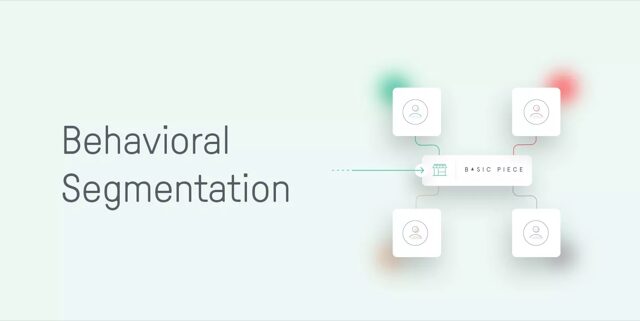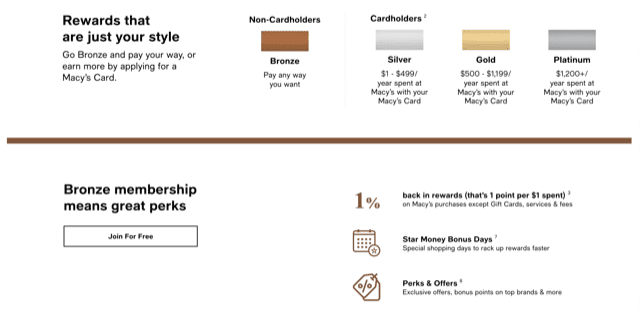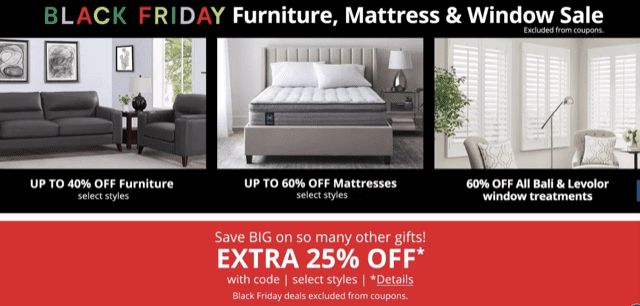
The holidays are coming up quickly and are an amazing opportunity to bring in new customers and generate more revenue. Everybody loves to shop during the season, whether it’s for gifts, Black Friday Sales, or for fun. A perfect way to take advantage of this opportunity is with personalized marketing. Personalized emails get six times higher transaction rates, but only 30% of brands use them. This is not only great from an audience-appeal perspective but in your relationship with the consumers themselves. People love it when things are tailor-made just for them. It helps them feel special, and like you’re listening and responding to their tastes. With these market segmentation examples, you’ll see just how effective the personalization approach can be.
Table of Contents
- 1 Narrowing Timelines
- 2 Strategic Overlap
- 3 The Starting Point
- 4 Shallow Behavioral Segmentation
- 5 The Opportunities
- 6 The Info You Should Gather
- 7 The Sales Approach
- 8 VIP Segments
- 9 The Power of Gifts
- 10 Easing Inventory Concerns
- 11 Negative Segmentation
- 12 Winback Campaign Tips
- 13 Know Your Platform
- 14 Get Started
Narrowing Timelines
Many ecommerce providers are finding that their opportunities come in much shorter windows than before. This is partly due to a rapidly expanding market and questions around product availability. With the ongoing COVID-19 pandemic, many items are in short supply, particularly electronics because of the global chip shortage. Despite this, the holiday season seems to be doing the complete opposite. Each year, it gets longer and longer. People would start putting their decorations out in October if not for Halloween. That’s what makes the holiday season the perfect time to put these market segmentation examples to use. You have a more flexible, predictable timeframe to work with.
Strategic Overlap

Personalized marketing and our market segmentation examples may seem like they don’t go together, but you would be surprised at the strategic value of using these together. Personalization is really the ultimate form of segmentation if you think about it. You’re segmenting your marketing all the way down to individuals. It does come with one flaw though: personalization can require a larger investment and be harder to scale. If you approach it right you won’t hit this wall, but many marketers will run out of bandwidth along the way. Segmentation is essentially breaking your audience down into groups. You can appeal to each group without needing to appeal to each individual person.
The Starting Point
If you’re preparing for the holidays and need market segmentation examples to implement in only a short amount of time, your best approach will be to gather data in three crucial areas. Those are demographic data, behavioral data, and personal data.
Demographic Data
Demographic data typically includes age, gender, income, geographic info, and potentially race, education, and employment status. It’s a very broad way of seeing which general groups your brand is appealing to.
Behavioral Data
Behavioral data tells you where people first engage with your brand, the types of content they engage with, their purchasing habits, and more. By knowing how your audience acts you can easier use our market segmentation examples.
Personal Data
Personal data is a combined form of some demographic and behavioral information. It includes skin tone, fit and color preferences, and similar details.
Many brands have opportunities for gathering this info and using personalized marketing, but few of them really take advantage of it.
Shallow Behavioral Segmentation

Source: Omnisend
Many companies fail to use our market segmentation examples to the fullest because their attempts are shallow. They rely heavily on basic remarketing campaigns with crude behavioral metrics. For example, if a company looked at people who previously purchased items, didn’t follow through with checkout, and what they ultimately bought. This is data too broad to offer any real use for segmentation purposes. You may think this is the best you can do with people more concerned about privacy and less likely to enable cookies. After all, 88% of consumers willing to share personal information want transparency about how it’s used. But there are still plenty of opportunities for gathering information for personalized marketing.
The Opportunities
You can start with our marketing segmentation examples by asking yourself questions about the broad data you have. “Why are people looking at products without buying them?” for example. Your goal is to get to the bottom of the data you do have, and there are different possible techniques for it.
Asking Directly
There’s no better source than the customers themselves. Ask them directly what their experience is and why they aren’t buying things.
Customer Experience Updates
Pay attention to how potential updates can change the experience of your site, and how its current implementation can affect users in ways you don’t realize.
Catalog Related Updates
Our marketing segmentation examples may not be working because your catalog isn’t organized correctly. You might not be showing a certain audience a better fit, or missing something in the market.
A keen eye and a constant desire for improvement are the best approaches you can take to improve your personalized marketing efforts.
The Info You Should Gather

Source: Nike
Rather than limiting yourself to the broad data most companies fall into, there is plenty of info that you can really take advantage of. The ones we suggest using are name, birthday, favorite color, product preferences, location, gender, who they’re shopping for, and why they’re shopping. For some of our marketing segmentation examples, you can also try commercially oriented data gathering. Find out the company people are working for, the size of it, its region of focus, and specialization. You may be surprised how members of a particular industry enjoy your products more than others.
Gather With a Purpose
The most important thing to remember is to gather data with a purpose and not be invasive. For example, birthday offerings are a great way to get people to re-engage, but you’ll want to have the month and maybe day on hand for future reference.
The Sales Approach
When it comes to implementing our market segmentation examples for personalized marketing, the obvious approach is for sales. Sales geared to specific users offer more opportunities for conversion. People like the idea that a product was picked out just for them. You can use the data you have to make inferences about potential things customers will like to buy, and offer them sales too appealing to refuse.
VIP Segments

Source: Macy’s
The best performing segment that we strongly urge all brands to use is VIP segments. How exactly you implement it for your industry will vary, but generally speaking, people enjoy prestige. An example of VIP market segmentation is through the frequency of buying, the value of purchases, and micro-influencer opportunities. Offer people rewards and the feeling of exclusivity for being one of the top purchasers with your brand.
How it Works
VIP segments are useful because they can be enabled and engaged in a way that brings you advocacy, awareness, content generation, and more. People will want to show off their exclusive rewards and offerings. Part one of that is letting people know they’re a VIP and putting as much value into it as you can. An example of this market segmentation technique is through email offerings. Two or three exclusive emails are often all the personalized marketing it takes before you see improved engagement from those users. And, the more important the customer feels, the more they’re likely to offer additional value on your behalf.
The Power of Gifts

Source: Sephora
Customers love free things. Gifts are a good way of giving them those things in a personalized way. It’s even more effective if you give them a thank you message with it. For this market segmentation example, it’s worth noting that free gifts with purchase are not the same thing as a personalized gift. People appreciated being reached out to. Handing out extra things at checkout is still a good tool, but it doesn’t feel personalized. It feels like something you hand out to all customers. Combine this with a VIP segment and offer prizes for generating new content for your brand and reap the most benefits you can out of this.
Easing Inventory Concerns
If you expect to have issues with your product inventory or stock, our market segmentation examples can be a great way to help ease frustration. The personalized marketing practices to take note of for this scenario are:
Pre-order Campaigns
You don’t need to know the arrival date for your product to allow people to view it and place an order. One of the huge benefits of pre-orders is that you can gauge demand for a product before having to receive it. If people love it and you get a huge amount of orders, you have plenty of time to order more. If people order less, you can potentially cut back.
Early Access Campaigns

Source: Walmart
The sooner you get products out to people the sooner you can get more awareness and put our marketing segmentation examples to use. It’s also a great way to reward VIP members and keep them coming back for more.
Won’t Be Here In Time Sales
Later in the holiday season, if you know you won’t be landing inventory, you can try running other sales to move attention elsewhere. Adding in subtle touches like free gift wrapping is a great way to make the most of this tactic and ship directly to gift recipients.
Negative Segmentation
There are some areas of our marketing segmentation examples for personalized marketing that you’re going to want to stay away from during the holiday season. For one thing, don’t stack more sales on people with recent purchases. They need a little time before they’re ready to shop again. Also, if your contact data is old there’s a chance your sending offers to people who couldn’t care less. You want to make sure that all your efforts have a chance to work.
Winback Campaign Tips
While you may have lost some customers in the past, there’s always a possibility for you to win them back. Two-thirds of people say email nurturing can be an effective way to reengage customers. This marketing segmentation example is often best achieved in a 2-3 part series.
Show Off What’s New
People may have drifted away from your store because they’ve gotten everything they could out of it. Showing them new items that will pique their interest is a great way to get them to return.
Larger Discounts

Source: JC Penney
If people aren’t buying at a normal price, they may want to buy when the price goes down. Giving steeper than normal discounts and using personalized marketing for it allows you to entice former customers back in. If you don’t want to run discounts too steep, you can always throw in free gifts if they return.
Create Urgency
Creating urgency is what brings this marketing segmentation example together. If you offer a short window for users to use their discount, like for the next day only, they’ll be further tempted to buy or risk losing the deal. Once they’ve used one discount, they’ll be likely to use more.
Know Your Platform
There are two primary ecommerce platforms for implementing our marketing segmentation examples: ESP and SMS. People often underestimate the potential of email campaigns. In fact, email marketing has an average ROI of 4400%. When used correctly with SMS efforts, you get clearer data, better functionality, and improved site and marketing integration. Our recommended tools for marketing are Klaviyo and Omnisend.
Klaviyo

Klaviyo has robust segmentation and personalized marketing opportunities. It includes template building and much better reporting than Omnisend. Klaviyo has all the tools to be of the best use to a complex, larger business. But, that means being more expensive.
Omnisend
Omnisend’s biggest appeal for our marketing segmentation examples is the ability to push notifications within a browser. That’s something Klaviyo doesn’t have. In terms of tools, Omnisend’s forms aren’t very expansive but can be combined with other apps like Gravity Forms or Justuno for better data collection. Plus, they’re constantly improving.
Regardless of what you choose, both options are a huge step up over Mailchimp. They make it simple to go all-in on your personalized marketing segmentation efforts.
Get Started
It’s never too early to start with your marketing segmentation efforts, especially as timeframes become more narrow. By starting with the data you have, figuring out areas to improve, and implementing strategies for getting new data, you can get a robust profile of your user base. From there, there are a number of strategies, like sales, VIP segments, and gifts to keep people involved in your store. You’ll want to stay away from some problem areas like recent purchasers and inactive users, though. And, you’ll want to pick the right platform to achieve it. If you find one that works for you, implementing our marketing segmentation examples should yield a huge number of benefits. Check out the rest of Coalition Technologies’ site for more marketing and SEO-related info.


